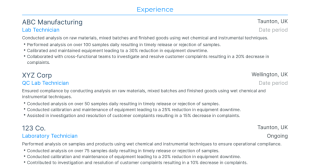How To Be An Anesthesiologist Assistant – Hearst Newspapers participates in several affiliate marketing programs, which means we may receive paid commissions on editorially selected products purchased through our links to vendor sites.
For healthcare, responding to changing needs in a timely manner can sometimes be a challenge. For example, it takes twelve years to train an anesthesiologist, so when demand exceeds supply, the industry has to turn to other providers. Anesthesiologist assistants are self-skilled health care providers who can provide complete anesthesia services under the supervision of an anesthesiologist. Their training takes only half as long as physician training, providing a faster solution to staffing needs.
How To Be An Anesthesiologist Assistant
An anesthesiology assistant (AA) is a type of physician assistant (PA). Most PAs specialize in the field of medicine; the AA has decided to specialize in anesthesiology.
How To Become An Anesthesiologist And Anesthesiologist Assistant
The requirements for a PA or AA program are very similar to those for a medical degree, and a pre-medical degree provides the necessary foundation in the basic sciences. These usually include general courses in physics, biology and chemistry, as well as calculus or statistics. Most also offer classes in advanced microbiology, organic chemistry and biochemistry, and some offer electives in subjects such as medical terminology or anatomy. The chemistry courses are especially useful for future anesthesiology residents. Most pre-intermediate courses require four years, although some accelerated programs shorten that to three years of intensive study.
After obtaining an appropriate bachelor’s degree, students who know they want to become an AA can choose a focused anesthesiology assistant training program instead of a family medicine assistant program. This includes specialized anesthesia training as part of the Physician assistant master’s program. After completing their master’s degree, AAs take an exam to become certified and, if they pass, become Certified Assistants of Anesthesiology, or CAAs, and are qualified to start immediately.
Alternatively, the student may enroll in an accredited physician assistant program. These usually take just over two years and lead to a master’s degree. Then, students who decide that they want to focus on anesthesiology would have to receive special training in this field, which would require another year of study.
For both pathways, the first year is spent mostly in the classroom, learning subjects such as medicine, anatomy and physiology, diagnostic skills, patient behavior and the practical details of the health care system. The second year includes a clinical rotation, where you learn hands-on to practice medicine under the supervision of experienced physicians and physician assistants. Some schools combine bachelor’s and master’s degrees, allowing students to earn both in one five-year program.
Master Of Anesthesiology Program
According to the Bureau of Labor Statistics, as of May 2016, the average salary for physician assistants, including anesthesiology residents, was $101,480. A median salary is the middle of a list of salaries for a single occupation. Therefore, half of the salaries are higher than the median and half are lower. Salaries ranged from a low of $65,620 to a high of $142,210.
The demand for anesthesia assistants is similar to the demand for anesthesiologists and nurse anesthetists, and both are high. The Bureau of Labor Statistics doesn’t track nurse anesthetists individually, but it predicts a 37 percent employment growth for physician assistants overall between 2016 and 2026. This is much higher than the average for all positions. The growing number of surgeries in doctor’s offices and outpatient clinics will help drive the demand for anesthesiologist assistants.
Currently, not all states allow anesthesiology residents to practice. At last count, 16 states, the District of Columbia, Guam, and Veterans Administration hospitals nationwide allow the use of CAAs, always under the direction and supervision of an anesthesiologist. The number of states that will adopt CAA is likely to continue to grow.
Before enrolling in a CAA program, you should check with your state’s medical board to see if CAAs can practice in the state.
Anesthesiologist Assistant Jobs
Fred Decker is a trained chef and certified food safety trainer. Decker has written for the Saint John, New Brunswick Telegraph-Journal, and has been published in Hospitality and Food Canada magazine. He had careers in computer sales, insurance and investment funds, and attended Newfoundland Memorial University and the Northern Alberta Institute of Technology.
What is the difference between a Licensed Vocational Nurse and a Certified Medical Assistant? Salary Comparison Between AA and CRNA How much does an anesthesiologist assistant earn? Anesthesiology Technician Vs Assistant Salary Physical Therapy Assistant Orthodontic Assistant Vs Salary. Salary for an Oral Surgeon’s Assistant Job Description for an Orthopedic Physician Assistant Role of a Physician Assistant in the Operating Room Comparison of Tech Vs. making the career of an anesthesiologist assistant an attractive, high-paying career. This comprehensive guide walks you through becoming an anesthesiologist assistant, covers training, licensure and certification, and answers the all-important question: anesthesiologist assistant salary.
An anesthesiologist assistant (AA) is an integral part of the anesthesia care team and works with anesthesiologists in providing comprehensive anesthesia care. AAs contribute significantly to the administration and management of anesthesia in various surgical settings. They are involved in many tasks, such as preoperative patient assessment, administering anesthesia, managing patient airways, and providing postoperative care. Using their advanced training, they help ensure the safe and effective delivery of anesthetics, contributing to overall patient care and health outcomes.
Now let’s look at ‘how to become an anesthesiologist assistant’. First, people interested in this profession must complete a rigorous academic and training process. After earning a bachelor’s degree, usually in a science-related field, they must earn direct patient hours for PA school. These hours are obtained through Pre-PA internships. Pre-physician assistant internships, or Pre-PA internships, provide valuable hands-on experience in the medical field.
Master Of Science In Anesthesia
Direct patient hours for PA school are essential to becoming an anesthesiologist assistant. It provides the foundational clinical experience necessary for advanced studies and prepares students for the challenges and rewards of patient care. Internships also provide networking opportunities that can be useful throughout their lives.
The first step to becoming an Assistant Anesthesiologist (AA) is to obtain a bachelor’s degree, usually in a scientific field such as biology, chemistry or pre-medical studies. Major areas of study should include general chemistry, organic chemistry, biochemistry, general biology, human anatomy and physiology, physics, calculus, and statistics. Many programs also recommend courses in psychology, genetics and microbiology to help develop a broad understanding of medical science.
During their undergraduate years, AAs who want to gain relevant experience in the healthcare field are also advised. This can be accomplished through pre-med shadowing programs, volunteer work, or work in healthcare, which exposes them to clinical environments and patient care.
After receiving their bachelor’s degree, nurse anesthetists must apply for a master’s degree in Anesthesiologist Assistant studies. This step often includes competitive counseling about getting into medical school to ensure the best chance for success.
A New Degree Of Care
Preparing for admission to the Master In preparation for applying for Master’s programs in Anesthesiologist Assistant Studies, applicants must meet certain conditions. These usually include specialized undergraduate courses, healthcare experience, and often the Medical College Admission Test (MCAT). However, some programs may accept the Graduate Record Examinations (GRE) instead of the MCAT.
Letters of recommendation are usually required, usually from science professors or medical professionals who can confirm the applicant’s suitability for the program. Some programs also require an interview as part of the admissions process.
After gaining the necessary knowledge, the next step is to pursue a master’s degree program designed specifically for nurse anesthetists. This challenging program combines advanced academic coursework with extensive clinical training, preparing students to excel in their careers as AAs.
Once accepted into a master’s program in Anesthesiologist Assistant Studies, students begin a rigorous 24-28 month program that combines theoretical classroom learning with practical clinical rotations. The didactic phase of the curriculum often includes areas such as advanced anatomy and physiology, pharmacology, principles and techniques of anesthesia, patient monitoring, and emergency medicine.
Anesthesiologist Assistant And Spend Narcosis Stock Photo, Picture And Royalty Free Image. Image 12732389
The clinical rotations are designed to provide students with hands-on experience in a variety of surgical specialties and procedural areas, such as general surgery, obstetrics, pediatrics, cardiovascular surgery and outpatient procedures. During these rotations, students develop their clinical skills under the supervision of experienced anesthesiologists and anesthesiologist residents.
The goal of the master’s program is to ensure that graduates have a deep understanding of the theory and practice of anesthesiology, enabling them to provide anesthesia and effectively manage patient care during surgical procedures.
Once you have earned your master’s degree, you must pass the NCCAA exam to qualify. Then you are ready to start your career as an Anesthesiologist Assistant. Now let’s talk about ‘anaesthesiologist assistant salary’ and ‘anaesthesiologist assistant salary’. As of 2023, the average salary for an anesthesiologist assistant is approximately $160,000 per year. However, anesthesia assistant salaries can vary widely depending on location, experience, and the specific healthcare environment. We will look at this topic in more detail later.
A career as an Anesthesiologist Assistant begins with the right training. Many reputable institutions offer excellent Anesthesiologist Assistant programs to provide students with the clinical skills and academic knowledge necessary to excel in this field. Below are some of the top schools that offer them
Surgical Outcomes Equivalent Whether Physician Anesthesiologist Assisted By Nurse Anesthetist Or Aa
How long does it take to become an anesthesiologist assistant, becoming an anesthesiologist assistant, how to become an anesthesiologist assistant salary, how much does an anesthesiologist assistant make, training to be an anesthesiologist, how much does anesthesiologist assistant make, how long does it take to be an anesthesiologist assistant, how long does it take to become a anesthesiologist assistant, how to be anesthesiologist assistant, how to be an anesthesiologist nurse, schooling to be an anesthesiologist, how to become an anesthesiologist assistant



